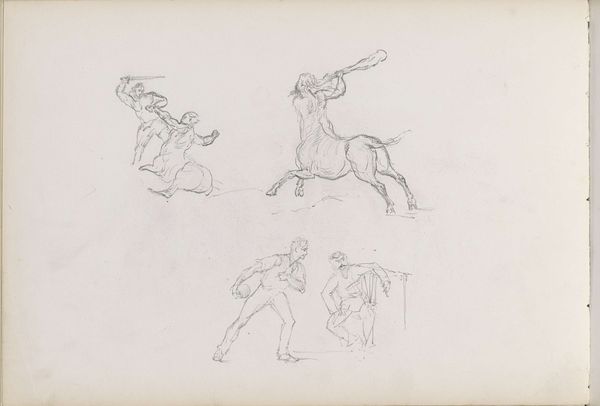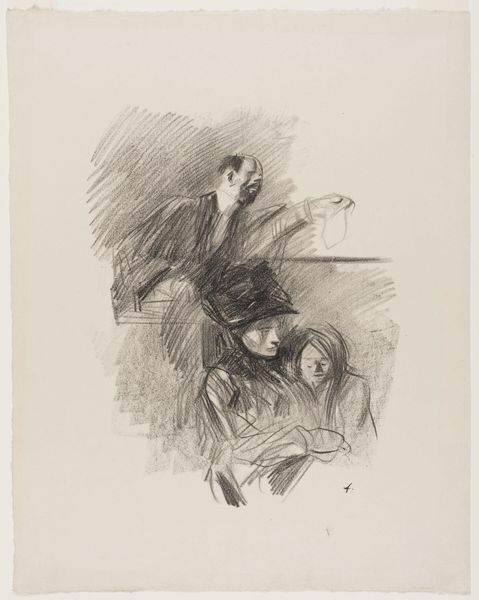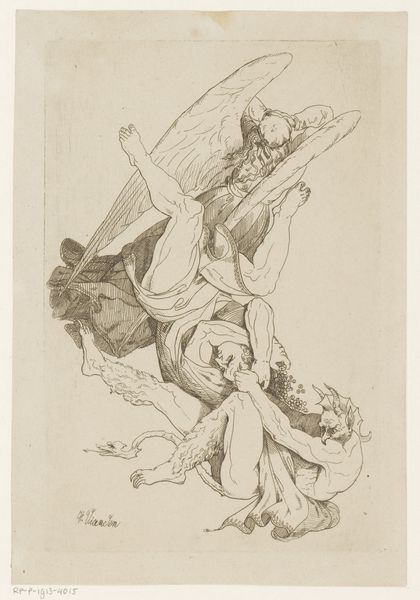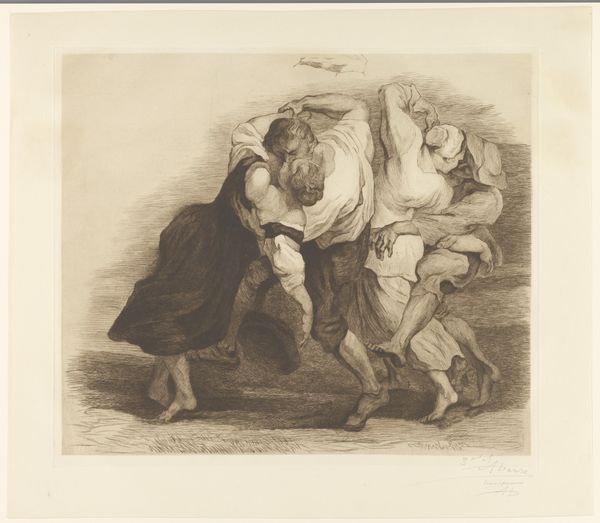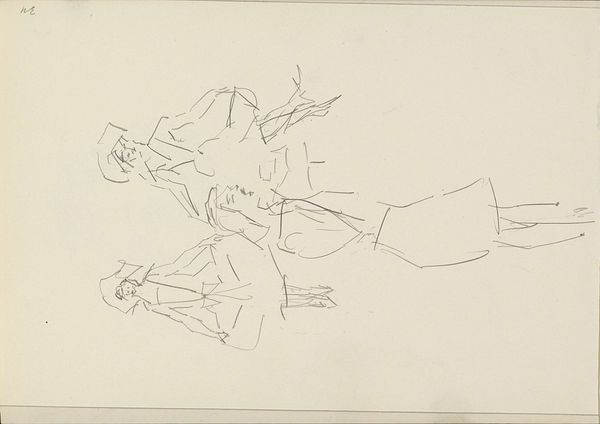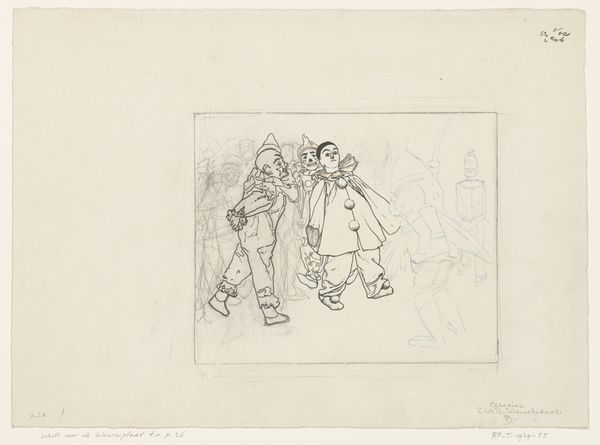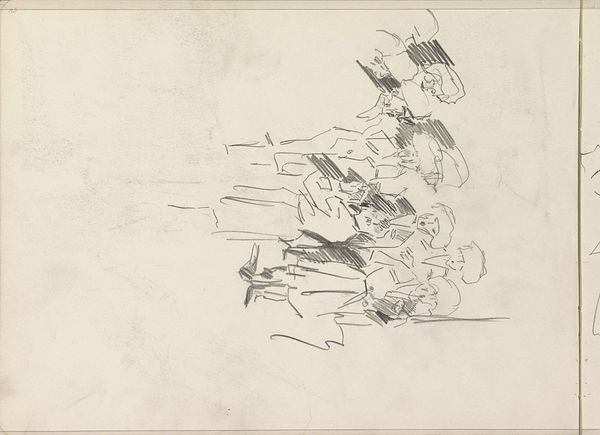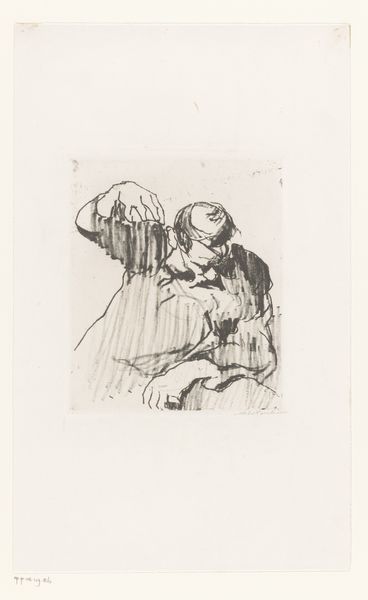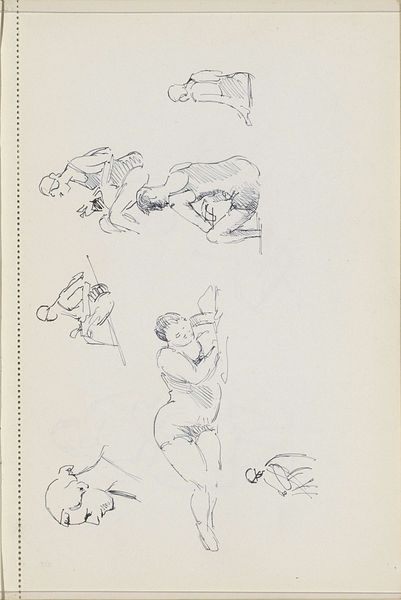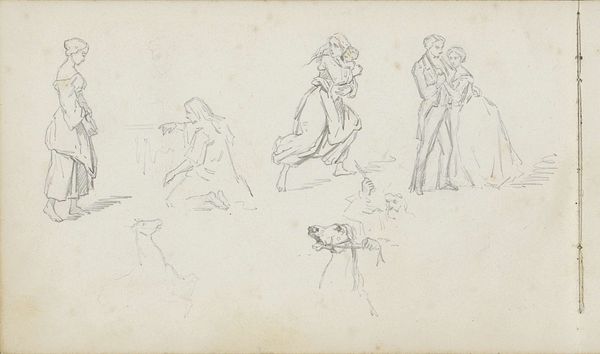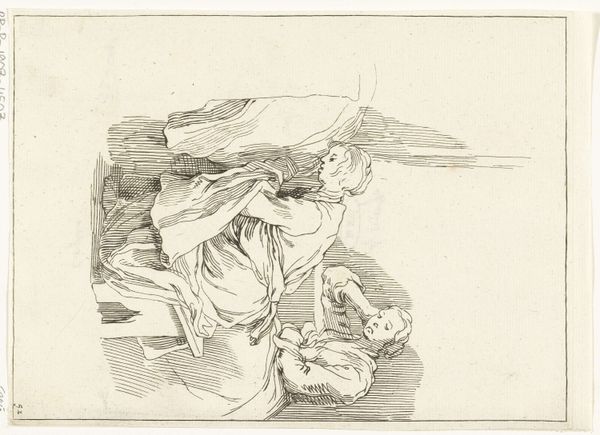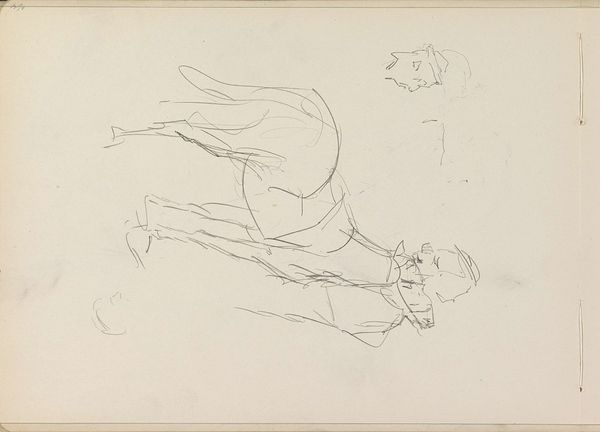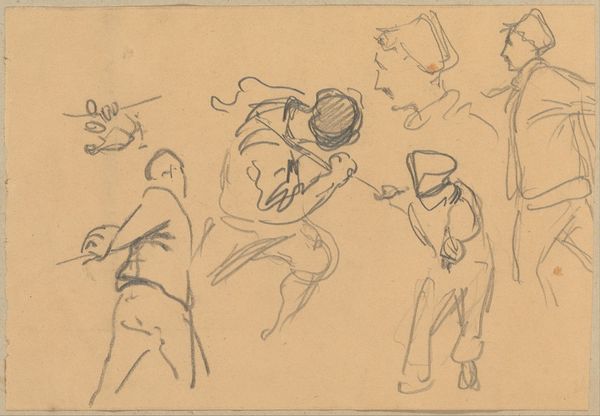
Dimensions: height 560 mm, width 755 mm, height 490 mm, width 648 mm
Copyright: Rijks Museum: Open Domain
Editor: Here we have Aat Verhoog's "Aanranding (vier keer)," which translates to "Assault (four times)." It's a pencil drawing, dating from before 2009, and it’s part of the Rijksmuseum collection. What strikes me is the repetition, but also the way the artist hasn't fully fleshed out each scene. What do you see in this piece? Curator: The four panels offer us a structured field of formal investigation. Observe how Verhoog orchestrates a visual rhythm through line and form. Note the dominance of diagonal lines; their dynamism contributes to a sense of instability, or perhaps propulsion. What does that repetition suggest to you? Editor: Well, it seems like a study… different takes on the same… scenario? The figures are also interesting—the 'assailant' is more clearly defined than the 'victim'. Does that play into the power dynamic somehow? Curator: Indeed. Consider the contrast in linework: the aggressors often feature sharper, more defined contours, while the figures of those attacked are rendered with a lighter, almost ephemeral touch. The relative visual weight creates an interesting contrast. Do you notice any formal connections between each of the quadrants beyond repetition of the figures? Editor: I see... they all seem to lean in the same direction. The negative space becomes an important element, doesn't it? It adds to the feeling of being off-balance. Curator: Precisely! And note the stark absence of background. Verhoog refrains from contextual details, forcing us to confront the bare components of action and form. The viewer is implicated in completing the composition with meaning, a kind of call and response. Editor: I'm starting to appreciate the thought that went into what seems like a simple sketch. Thank you, that perspective makes a big difference. Curator: The rigorous formal construction, viewed through a semiotic lens, offers an interesting reading. I am always drawn to the artist's use of very simple tools to suggest rather complicated situations.
Comments
No comments
Be the first to comment and join the conversation on the ultimate creative platform.
